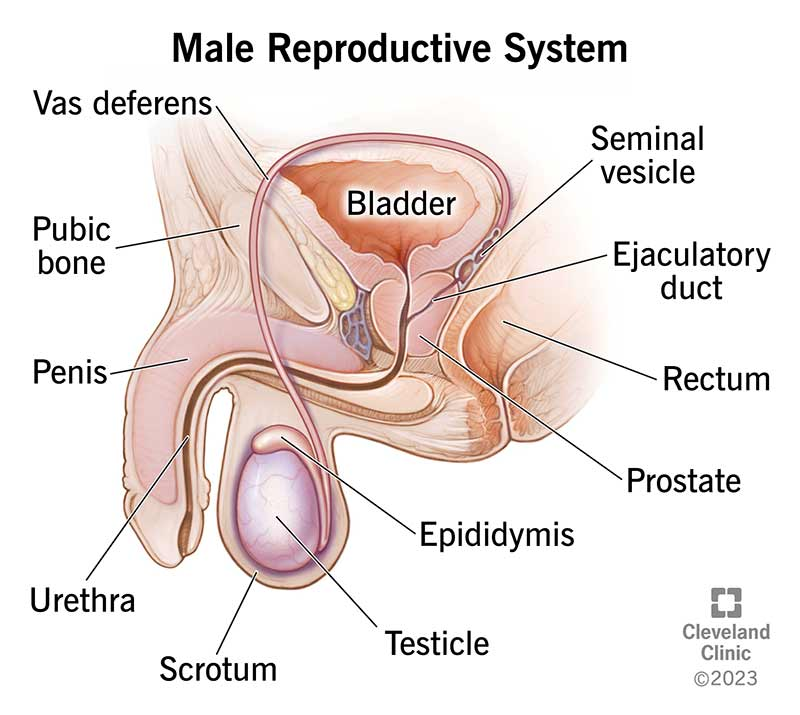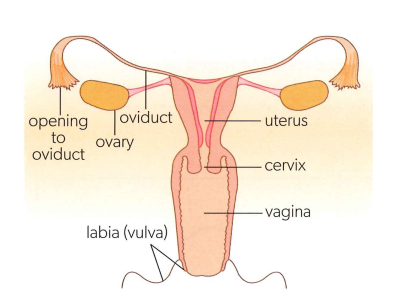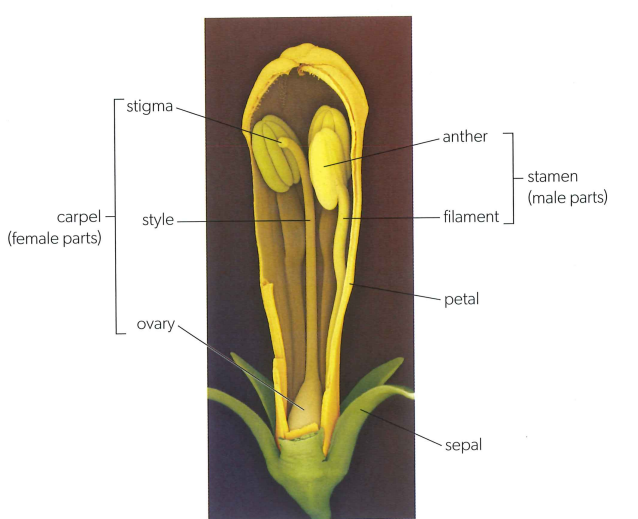IB Biology SL 2025 Exam - Unit 5 Study Guide
1/92
Earn XP
Description and Tags
Covering topics from Unit 5 that could be on the 2025 test!
Name | Mastery | Learn | Test | Matching | Spaced |
|---|
No study sessions yet.
93 Terms
Parent Cell
The cell that divides
Daughter Cell
The cells that are produced from division
Cytokinesis in Plant Cells
Microtubules are built into a scaffold straddling the equator to assemble vesicles
Vesicles fuse together to form plate-shaped structures
Eventually, two complete layers of membrane are formed across the whole of the equator, connecting to the existing plasma membranes to complete cytokinesis
Cytokinesis in Animal Cells
Plasma membrane is pulled inwards towards the equator to form a cleavage furrow
Actin and myosin pull plasma membranes towards equator
When cleavage furrow reaches the center, the cell is pinched apart
Unequal Cytokinesis in Yeast
Yeast cells reproduce asexually through budding
Nucleus divides by mitosis, with small outgrowth from the mother cell receiving one nuclei but a small amount of cytoplasm
Dividing wall is constructed and separates the yeast cells
Unequal Cytokinesis in Oogenesis
Since females typically only produce one egg at a time, there is unequal division
In the first division, one large cell has nearly all cytoplasm and another smaller polar body
In the second division, the same thing happens, with the larger cell maturing into a oocyte ready for fertilization
Mitosis
Used to produce genetically identical cells
2n is the diploid number of chromosomes
Meiosis
Used to halve the chromosome number from diploid (2n) to haploid (n). Known as reduction division and occurs to keep the chromosome numbers down
Helps to generate genetic diversity
DNA replication as a prerequisite for both mitosis and meiosis
Cells that are preparing for nuclear division need to replicate their DNA in order for the daughter cells to have genetic information
Condensation of Chromosomes
Since DNA chromosomes are extremely long (50,000 micrometers) in relation to the nucleus size (less than 5 micrometers wide), they need to be condensed by shortening them in order to prevent tangles, breaks or knots
Movement of Chromosomes
Chromosomes are moved with microtubules (hollow cylinder of tubulin proteins that can be rapidly assembled or disassembled)
Microtubules can link up to kinetochores (which attach to the centromere). These kinetochores act as a motor by removing tubulin subunits, shortening the microtubules and bringing them to the poles
Interphase in Mitosis
Chromosomes are dispersed through nucleus
All DNA is replicated so each chromosome has 2 chromatids
Prophase in Mitosis
Chromosomes condense into thick, short structures
Microtubules grow from MTOCs at the poles to form a spindle-shaped array linking the poles of the cell
Nuclear membrane breaks down at the end of this phase
Metaphase in Mitosis
Microtubules growing attach to the centromere of each chromatid, meaning the sister chromatids are attached to opposite poles
Microtubules are put under tension to make sure attachment is correct. If it’s correct, the chromosomes cannot be pulled apart
Chromosomes are aligned at the equator at the end of this phase
Anaphase in Mitosis
Cohesin loops that held the chromatids are cut
Microtubules link each chromosome to one of the poles, with the kinetochore shortening the microtubule to bring the chromatids to the poles
All chromatids reach the poles at the end of this phase
Telophase in Mitosis
The chromosomes are pulled into a tight group near the MTOC and a nuclear membrane forms around them
Chromosomes decondense and spread out
Diploid Cells
Cells that have two sets of chromosomes and therefore homologous pairs of chromosomes
Haploid Cells
Cells that only have one set of chromosomes that are all non-homologous
Interphase I in Meiosis
All DNA is replicated in this process before reproduction occurs
Prophase I in Meiosis
Homologous chromosomes form parallel pairs
Crossing over occurs between non-sister chromatids in each bivalent
Chromatids shorten and thicken
Metaphase I in Meiosis
Nuclear membrane disperses and homologous chromosomes in each bivalent become attached to spindle microtubules
Bivalents spread out in equator
Pairing of homologous chromosome ends but chiasmata prevents separation
Anaphase I in Meiosis
Kinetochores shorten spindle microtubules, pulling chromosomes towards poles
Chiasmata slide to end of chromosomes
Pairs of homologous chromosomes separate and move to opposite poles
Telophase I & Cytokinesis in Meiosis
Nuclear membrane is assembled around the chromosomes at each pole
Chromosomes decondense
Cytokinesis divides cytoplasm, resulting in two haploid cells
Prophase II in Meiosis
Because the chromosomes already have two chromatids, there is no need for DNA replication
Chromatids are condensed
Metaphase II in Meiosis
Nuclear membranes disperse and chromatids of chromosomes became attached to spindle microtubules from opposite poles
Chromosomes spread out on equator
Cohesin loops are cut allowing them to separate
Anaphase II in Meiosis
Kinetochores on centromere shorten spindle microtubules
These chromosomes have reached the poles at the end of the phase
Telophase II & Cytokinesis in Meiosis
Nuclear membranes are assembled around chromosomes at each pole
Decondensation spreads chromosomes out throughout the 4 nuclei
Cytokinesis occurs, dividing both cells to produce 4 haploid cells
Down syndrome and non-disjunction
Non-disjunction: pair of homologous chromosomes might move to the same pole in Anaphase I or both chromatids move to the same pole in Anaphase II
Down syndrome: non-lethal non-disjunction event that occurs when a person has 3 copies of chromosome 21
Meiosis as a source of variation
Crossing over - due to the homologous chromosomes pairing up early on, the two strands of the DNA helices are cut at the same point and replaced with an equivalent strand in the other chromatid, resulting in a mutual exchange of DNA
Random orientation - Since the chromatids have random orientations when they are brought to the equator, there is a 50% chance of one going to a certain side, increasing genetic variation
Sexual Reproduction
Two parents: one male and one female
Meiosis is used once per generation
Offspring are genetically different from their parents
New gene combinations are produced each generation
Genetic variation is generated
Offspring may be better adapted to their parents if the environment is changing
Asexual Reproduction
One parent
Mitosis is used throughout the life cycle
Offspring are genetically identical to each other and the parent
Existing gene combinations are maintained down the generations
No genetic variation
Role of meiosis and fusion of gametes in the sexual life cycle
Fusion of gametes allows for offspring to be produced (fertilization)
However, without meiosis to halve the chromosome number and maintain genetic diversity, it would be impossible to fuse gametes and the sexual life of eukaryotes could not occur
Differences between male and female sexes in sexual reproduction
Male gametes travel to the female gametes
Male gametes are smaller than the female gametes
Male gametes have less food reserves than the female gametes
More male gametes in quantity than female gametes
Oestradiol
Produced by the corpus luteum
Rises to a peak at the end of the follicular phase. Stimulates repair and thickening of endometrium after menstruation and an increase in FSH receptors that make the follicles more receptive to FSH
Progesterone
Another hormone produced by the corpus luteum
Rise at the start of the luteal phase, reach a peak, and then drop back to a low level by the end of this phase
Promotes the thickening and maintenance of the endometrium
Inhibits FSH and LH secretion by the pituitary gland
Luteinizing Hormone (LH)
Protein hormone produced in the pituitary gland
Increases sharply on Day 14 as it stimulates the completion of meiosis in the oocyte and partial digestion of the follicle wall to open it during ovulation
Promotes the post-ovulation development of the wall of the follicle into the corpus luteum
Follicle-Stimulating Hormone (FSH)
Another protein hormone produced in the pituitary gland
Rises to a peak at the end of the menstrual cycle to stimulate the development of follicles, each containing an oocyte and follicular fluid
Stimulates secretion of oestradiol by the follicle wall3
Positive Feedback
Amplify an initial stimulus, leading to an intensified response
Negative Feedback
Output of a system influences its own input, causing the process to slow down or halt, thus maintaining a stable internal environment
Fertilization in Humans
First sperm that manages to penetrate the zone pellucida on the egg binds and the membranes of the sperm and egg fuse together
Layer of glycoprotein around the egg hardens to prevent entry of more sperm
Nuclei from sperm and egg remain separate until the first mitosis, in which both 23 chromosomes are released and participate jointly in mitosis using the same spindle of microtubules. This produces the diploid number of 46
Use of hormones in in vitro fertilization (IVF) treatment
Every day for about 2 weeks, the woman has an injection containing a drug to suspend the menstrual cycle by stopping FSH and LH
Intramuscular injections of FSH are given daily for 7-12 days, stimulating more follicles to develop
When follicles are 18mm in diameter, they are stimulated to mature by an injection of human chorionic gonadotropin, in which the eggs will be collected 34-35 hours after through a minor surgical procedure
Each egg is mixed with 50,000-100,000 sperm in sterile conditions in a shallow dish. If fertilization is successful, one or more embryos are placed in the uterus
Sexual reproduction in flowering plants
Flowers reproduce by pollination, in which pollen is created from the anthers
Fertilization happens inside an ovule, in the ovary. The pollen tube carrying the male gametes grows towards one ovule and into the end. When the pollen tube reaches the center, the male gametes are released
Product of fertilization is a zygote, which develops into an embryo with an embryo root, an embryo shoot, and either one or two embryo leaves
Features of an insect-pollinated flower
Large, brightly colored petals to advertise the flower, act as a landing stage and guide the insect’s movements to the anther or stigma
Scent is secreted to advertise the flower
Pollen grains are large and spiky to stick to insects
Stigma is large and sticky to collect pollen from visiting insects
Nectaries secrete nectar that is attractive to insects, and are positioned deep so that insects must brush past anthers and stigma to reach it
Methods of promoting cross-pollination
Wind pollination - adapting structure so wind can take pollen more efficiently
Water pollination - less common but some plants rely on water to carry pollen
Animal interactions
Self-incompatibility mechanisms to increase genetic variation within a species
Adaptations to facilitate transfer of pollen from one plant to another by an outside agent
Separation of anthers and stigmas in separate male and female flowers both on the same and different plants
Maturity of anthers and stigmas at different times (protandry - anthers first; protogyny - stigma first)
Dispersal and germination of seeds
Dry & explosive
Fleshy and attractive for animals to eat
Feathery or winged to catch the wind
Covered in hooks that catch onto the coats of animals
Production of haploid gametes in parents and their fusion to form a diploid zygote as the means of inheritance
During meiosis, the diploid cells halve into haploid cells. This allows the parents to be able to individually contribute to the offspring when mitosis happens
Methods for conducting genetic crosses in flowering plants
This can be done with a paint brush to perform the cross by transfer of pollen or an anther with pollen dabbed directly onto the stigma
Gregor Mendel’s method revealed more about what the crosses could do to produce new plants
P Generation
The parents in reproduction
F1 Generation
The first filial generation of reproduction from the parents
Homozygous
The gametes that are produced have the same allele of this gene (GG or gg)
Heterozygous
The gametes that are produced have different alleles of this gene (Gg)
Genotype
Combination of alleles, such as GG, Gg, or gg
Phenotype
The observable traits or characteristics of an organism
Mainly due to the interaction between the genotype of an organism and the environment it exists
Effects of dominant and recessive alleles on phenotype
The dominant allele will always overpower the recessive allele. If there is either one or two, the dominant one will be the phenotype
If there are two recessive alleles, they will be a different phenotype
Phenotypic Plasticity
A form of adaptation that’s reversible because genes have only been switched on or off
Pale skin turning to darker skin when exposed to more sunlight due to increased black melanin production in the skin
Phenylketonuria
Example of a genetic disease due to a recessive allele
Produced by mutation of the gene coding for the enzyme phenylalanine hydroxylase, which is used to convert phenylalanine to tyrosine, which can be used to make proteins
This is located on chromosome 12
Single-nucleotide polymorphisms and multiple alleles in gene pools
SNPs - where different bases can be present in a gene. Because of this variety, there will be many different alleles of a gene in the gene pool
ABO blood groups as an example of multiple alleles
There are 6 different alleles, with 4 possible combinations
IAIA = Type A Blood
IAi = Type A Blood
IBIB = Type B Blood
IBi = Type B Blood
IAIB = Type AB Blood
ii = Type O Blood
Incomplete Dominance
An intermediate phenotype that combines both genes (pink flowers coming from red and white flowers reproducing)
Codominance
No intermediate between two genes, resulting in an intermediate phenotype (AB blood)
Sex determination in humans and inheritance of genes on sex chromosomes
Since females are XX, they will always give one X chromosome to the offspring
Since males are XY, they may give the X or Y chromosome, which determines the gender of the offspring
If a person has XXY, this is a boy with Klinefelter’s disease, showing how the presence of a Y chromosome determines the male
If a person is X, this is a girl with Turner’s disease, showing how the absence of a Y chromosome determines the female
Haemophilia as an example of a sex-linked genetic disorder
People who have haemophilia lack or have a defective form of Factor VIII, which is responsible for clotting
This is located on the X chromosome, and since it’s recessive, males are much more common to have this disease than females since males are XY but females are XX
Pedigree Chart

Continuous variation
Continuous range of types is possible
Trait is influenced by multiple genes if there is a genetic cause
Environmental factors may influence the trait
Tree height, body mass of animals, skin color
Discrete Variation
Separate categories of the variant, with no intermediates in between
Trait is influenced by just one or at most a few genes if there is a genetic cause
Environmental factors do not usually influence the trait
ABO blood groups, number of eggs laid, left/right handed snail shells
Box-and-whisker plots to represent data for a continuous variable such as student height
Chromosomes
DNA within the nucleus that exist as long single molecules
Chromatids
The two strands that can be seen in a chromosome as the process of mitosis/meiosis continues
Microtubule Organizing Centers (MTOCs)
Areas that are found at the poles of the cell that can reassemble microtubules
Testis
Produces sperm and testosterone
Scrotum
Holds testes at a lower than core body temperature
Epididymis
Stores sperm until ejaculation
Sperm Duct
Transfers sperm during ejaculation
Seminal Vesicle & Prostate Gland
Secrete fluid containing alkali, proteins and fructose that is added to sperm to make semen
Urethra
Transfers semen during ejaculation and urine during urination
Penis
Penetrates vagina for ejaculation of semen near the cervix
Male Reproductive System

Ovary
Produces eggs, oestradiol and progesterone
Oviduct
Collects eggs at ovulation, provides a site for fertilization then moves the embryo to the uterus
Uterus
Provides for the needs of the embryo and then fetus during pregnancy
Cervix
Protects fetus during pregnancy and then dilates to provide a birth canal
Vagina
Stimulates penis to cause ejaculation and provides a birth canal
Vulva
Protects internal parts of the female reproductive system
Female Reproductive System

Ovarian Cycle
Consists of the follicular phase and luteal phase
Follicular Phase
First half of ovarian cycle
In each follicle, eggs are stimulated to grow, with the most developed follicle breaking open and releasing the egg into the oviduct (ovulation, usually on Day 14)
Luteal Phase
Second half of ovarian cycle
The wall of the follicle that released an egg develops into the corpus luteum. However, if fertilization does not occur, the corpus luteum breaks down and the ovary returns to the follicular phase
Uterine Cycle
Happens concurrently with the ovarian cycle
Endometrium becomes thickened and more richly supplied with blood during luteal phase
If there is no embryo, thickening starts to break down towards the end of the luteal phase and sheds in material form
Menstruation Cycle Chart

Stamens
Male parts of the flower. Consist of:
Anther - supported by a stalk called the filament. Diploid cells inside the anther divide by meiosis to produce 4 haploid cells, each developing into a pollen grain. Pollen grain divides by mitosis to produce 3 haploid nuclei, with two used as male gametes
Carpels
Female parts of the flower. Consist of:
Ovary - contains one or more ovules. One cell in the center of the ovule grows large and divides by meiosis to produce 4 haploid nuclei. One of these haploid nuclei divide 3 times by mitosis to produce 8 haploid nuclei, one which is a female gamete
Stigma - where the flower receives and traps pollen grains
Style - connects the ovary to the stigma
Reproductive System of a Flower
